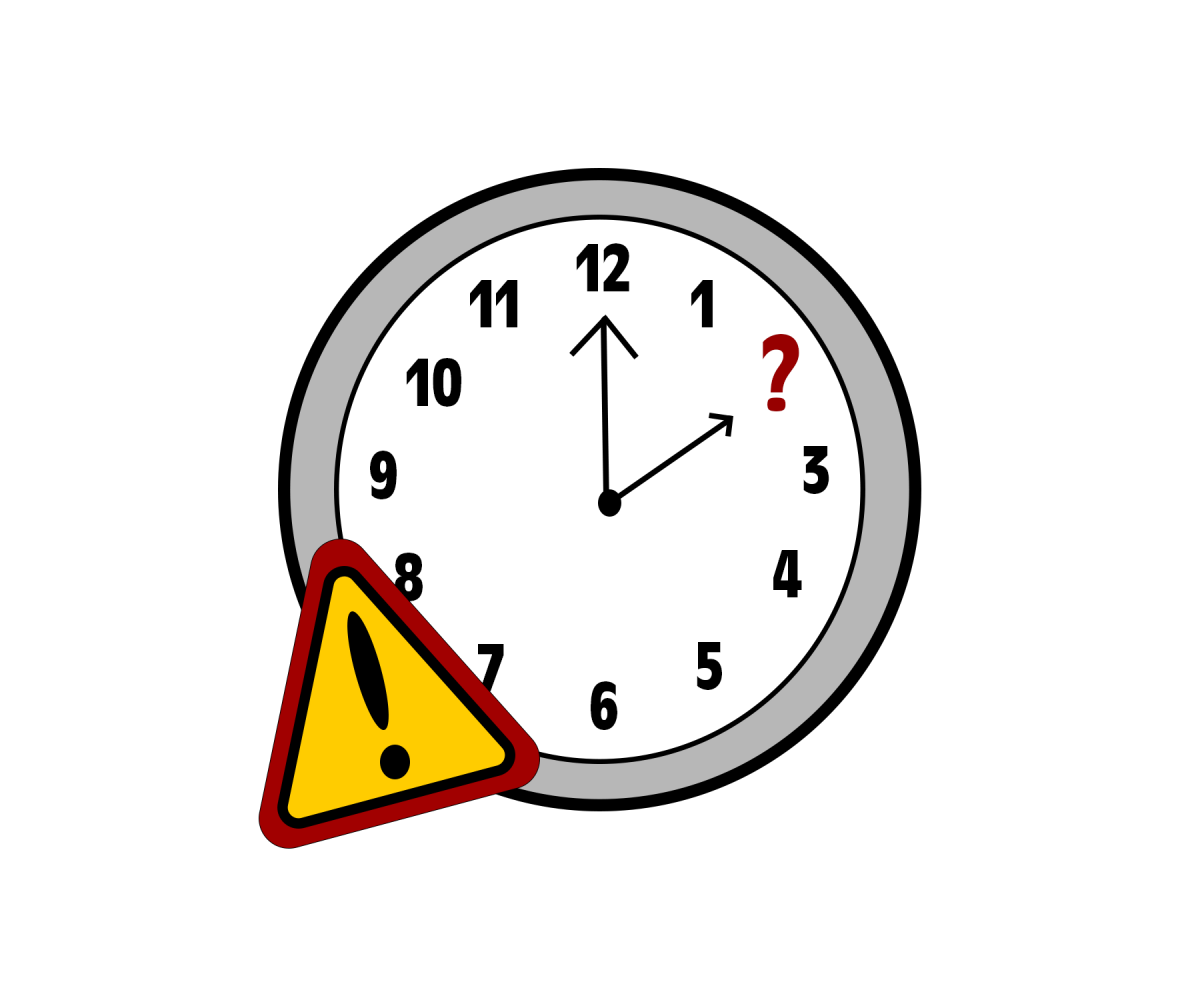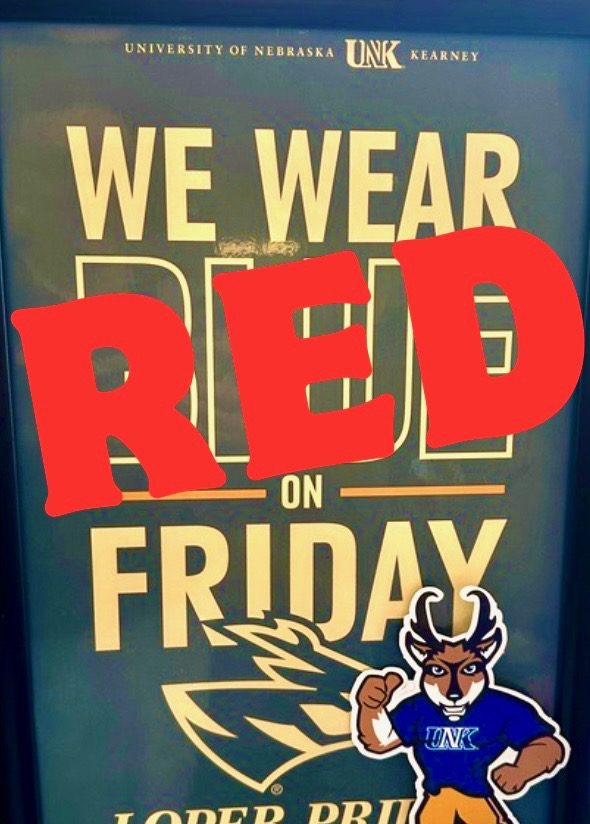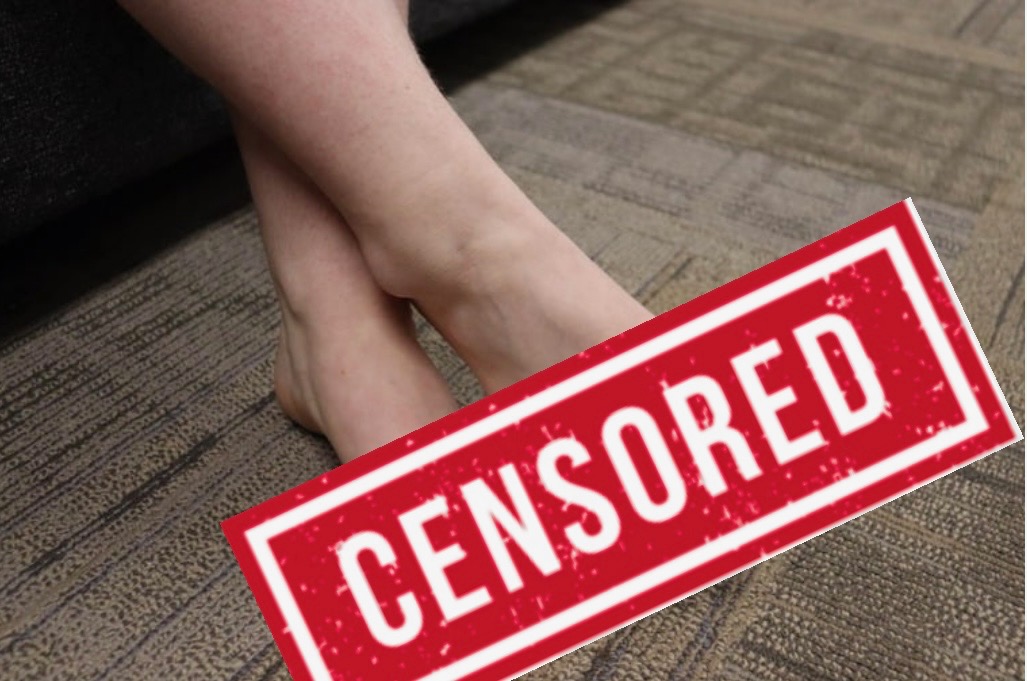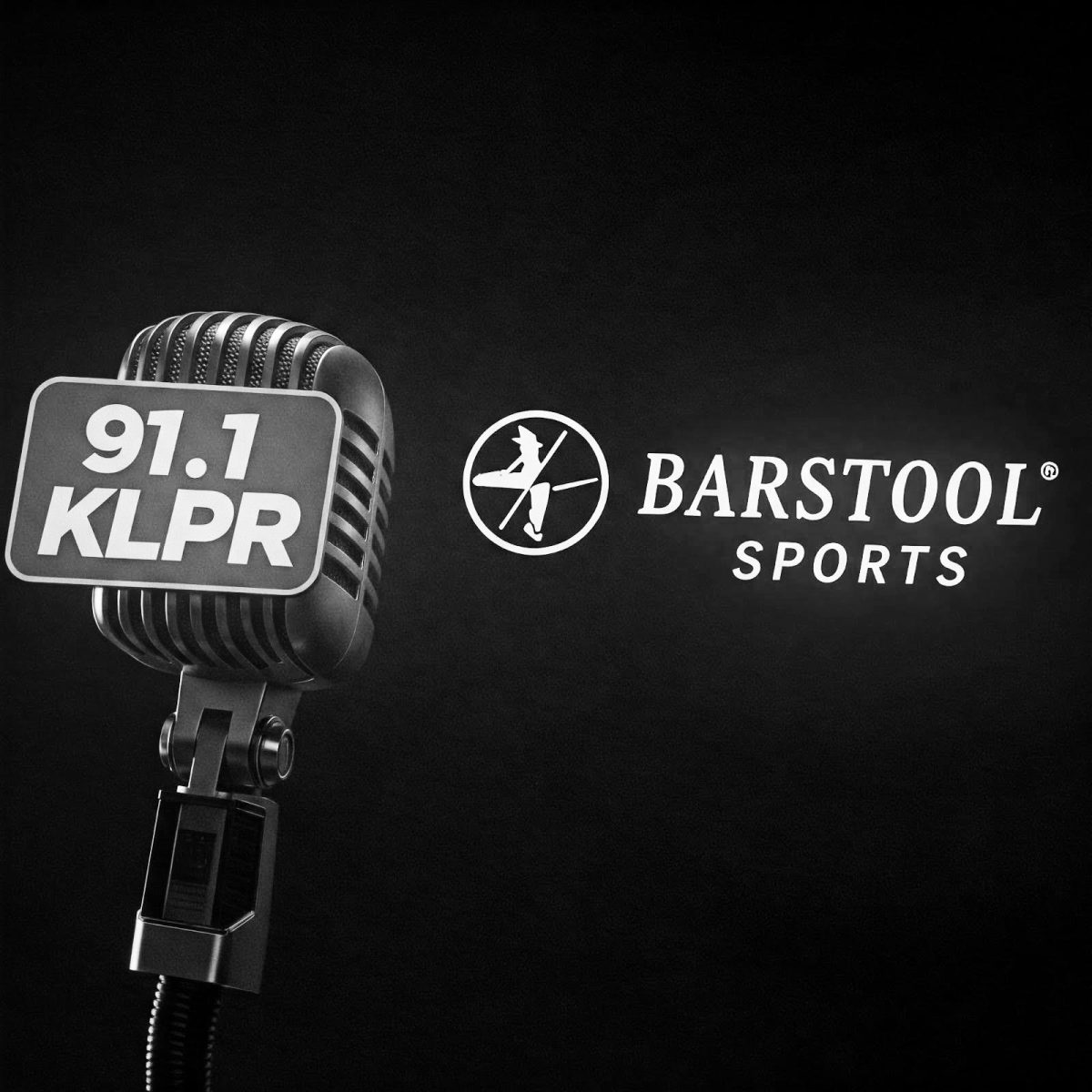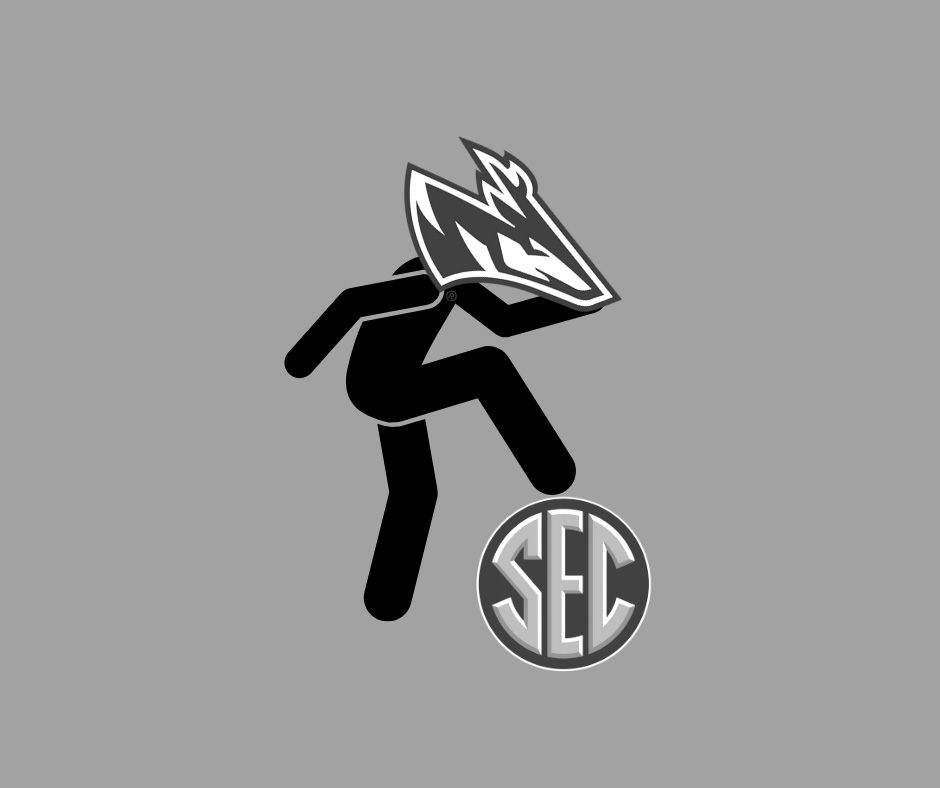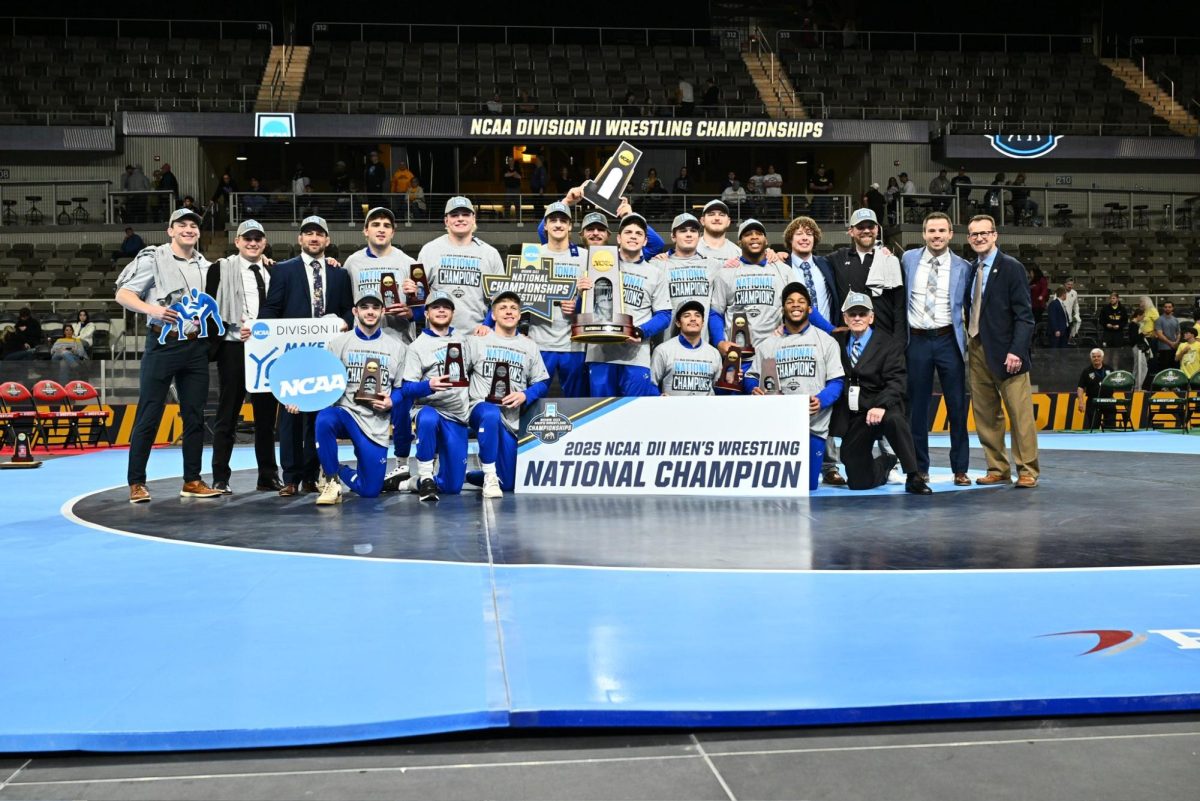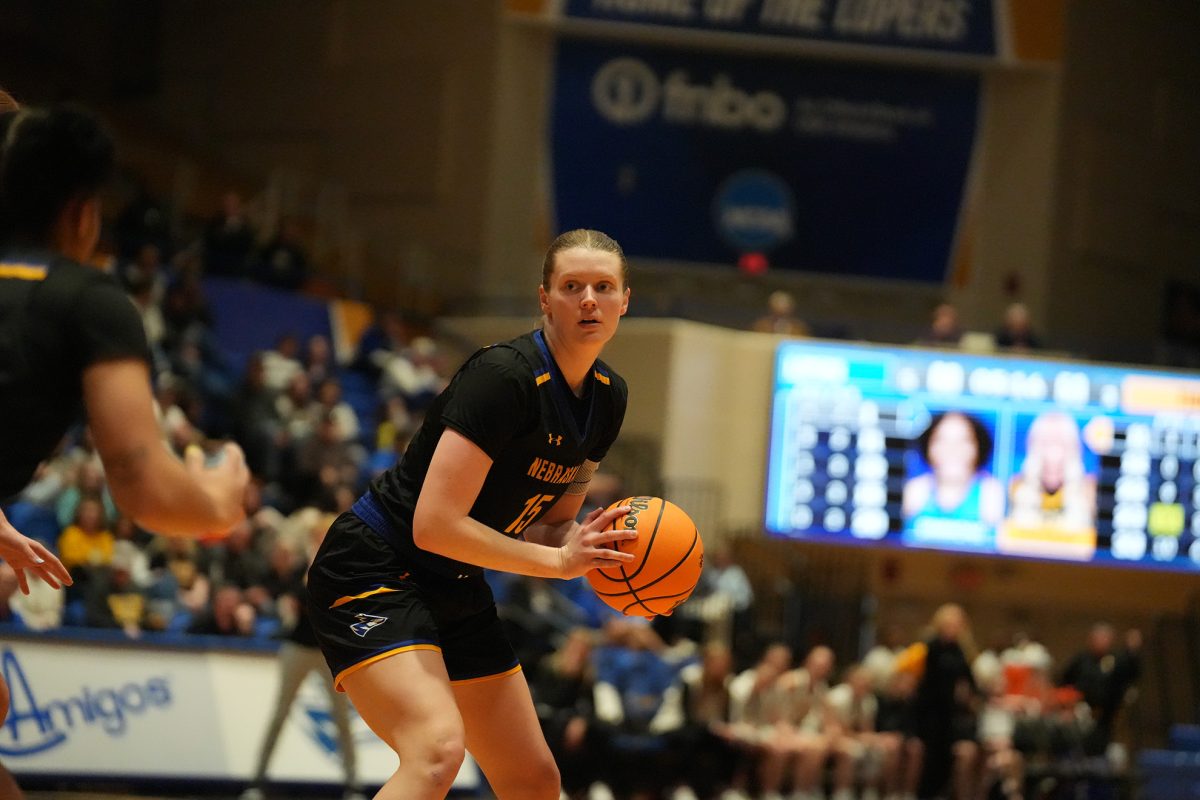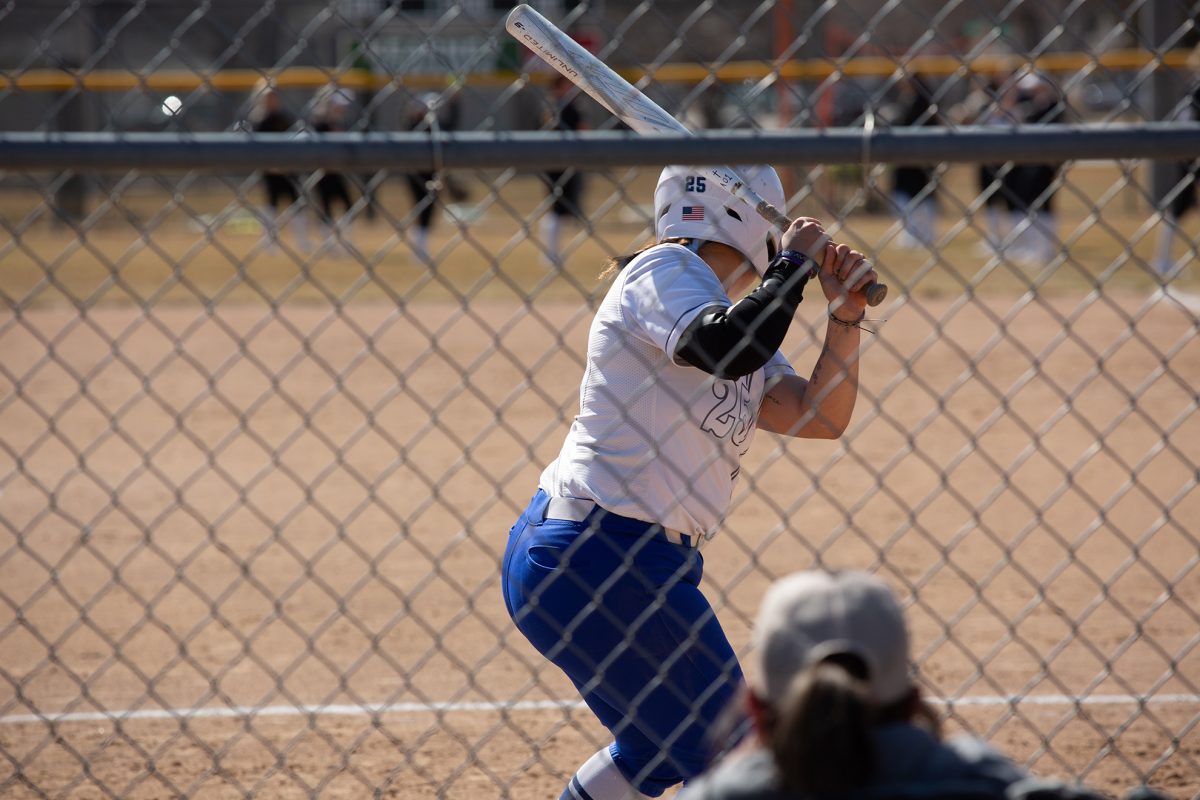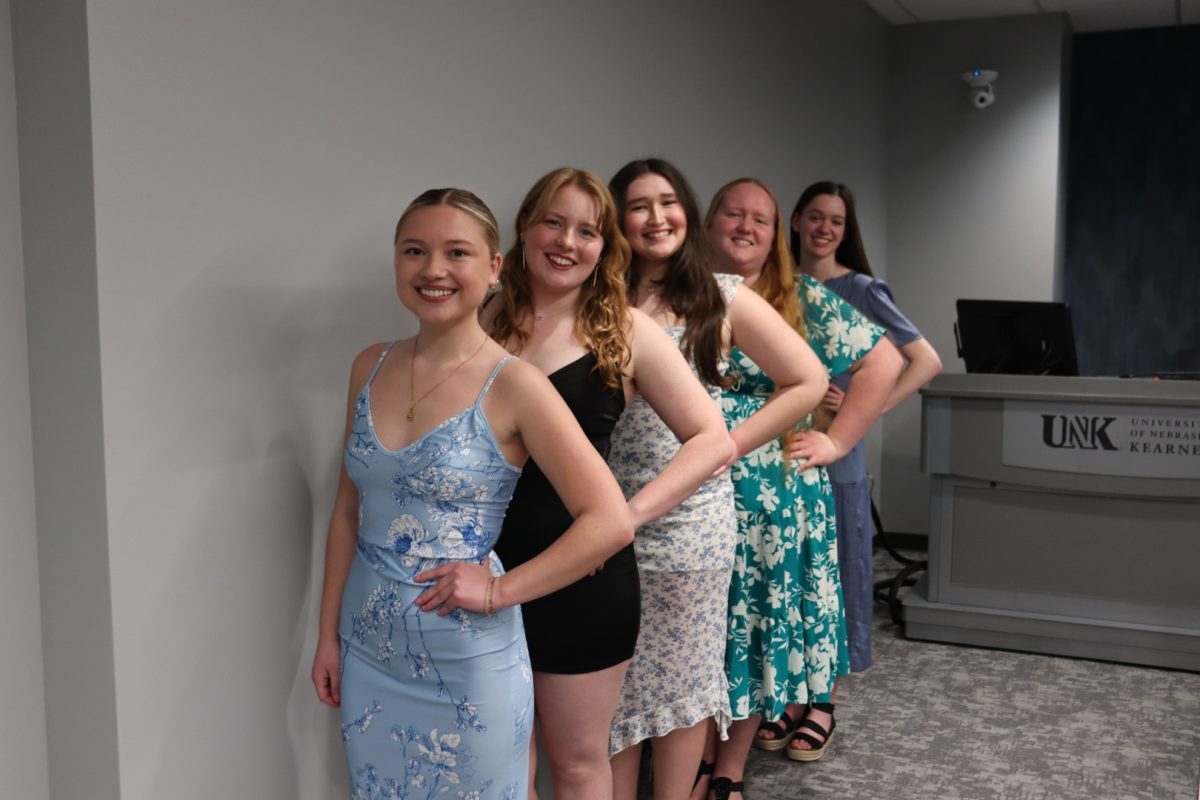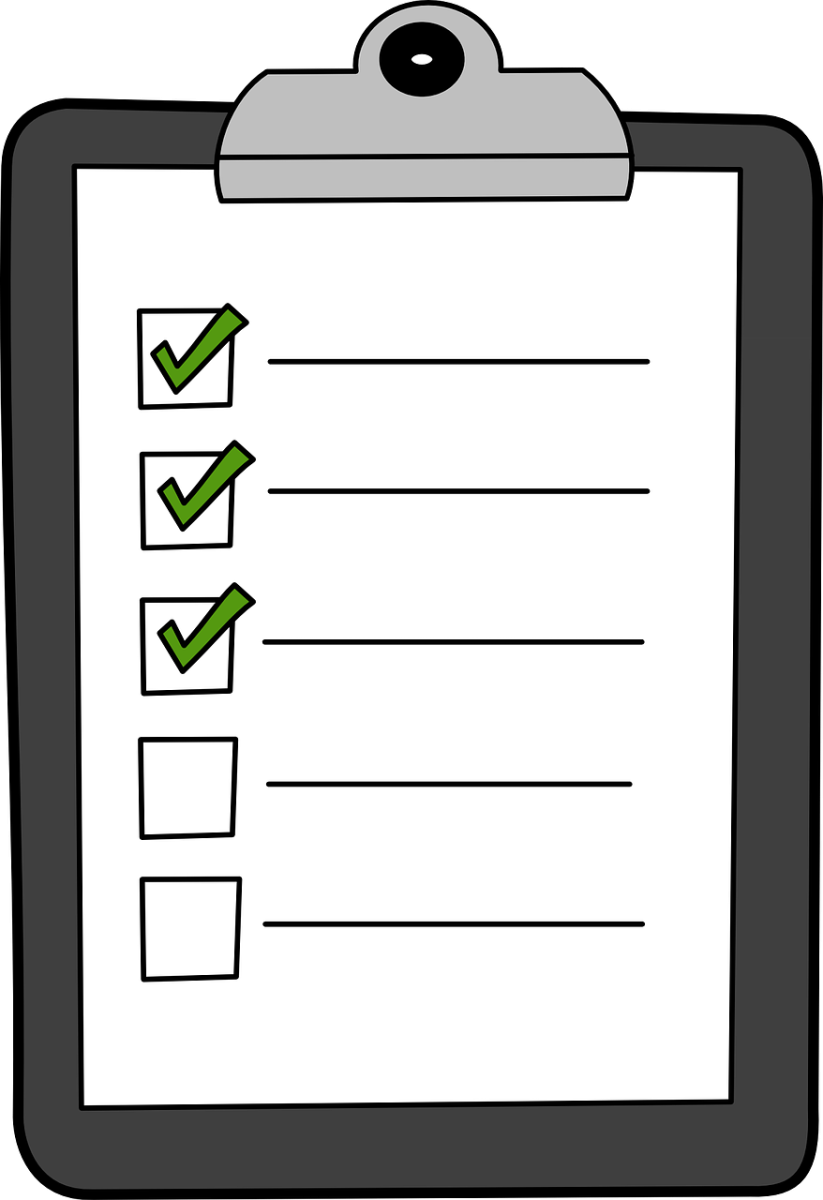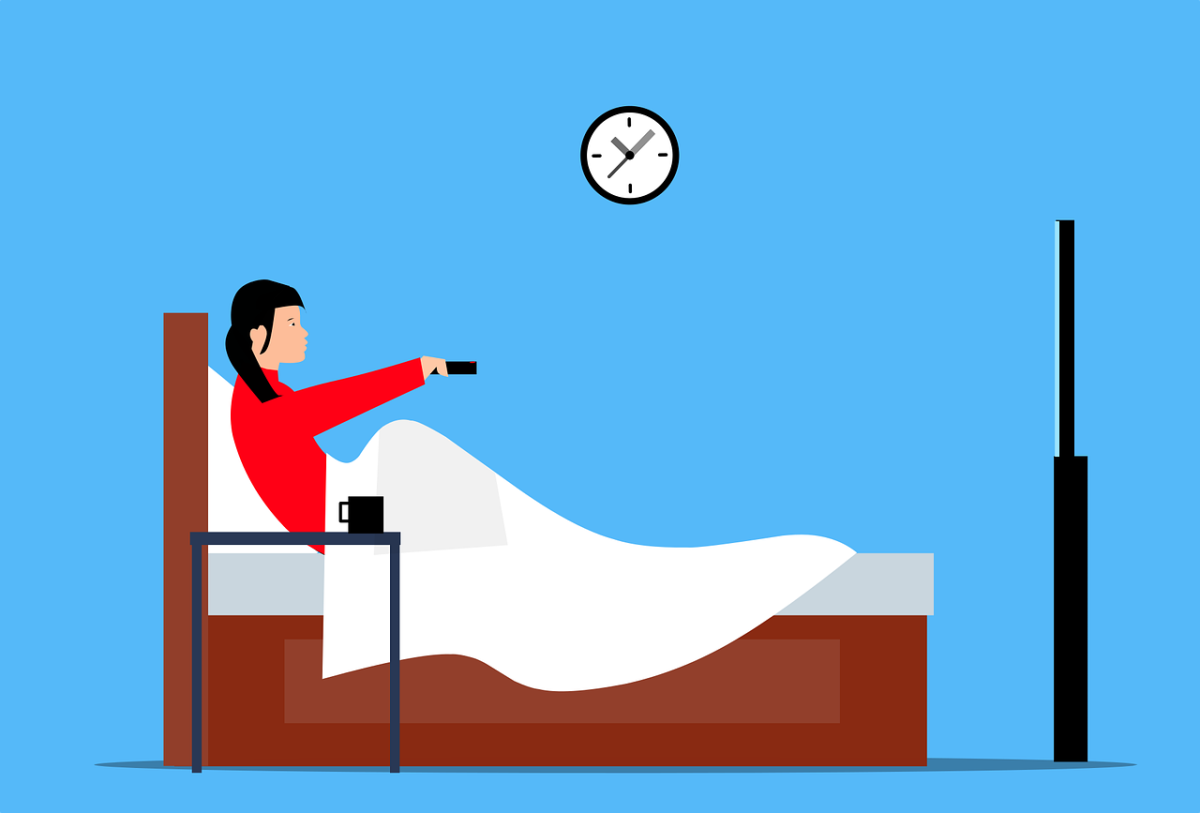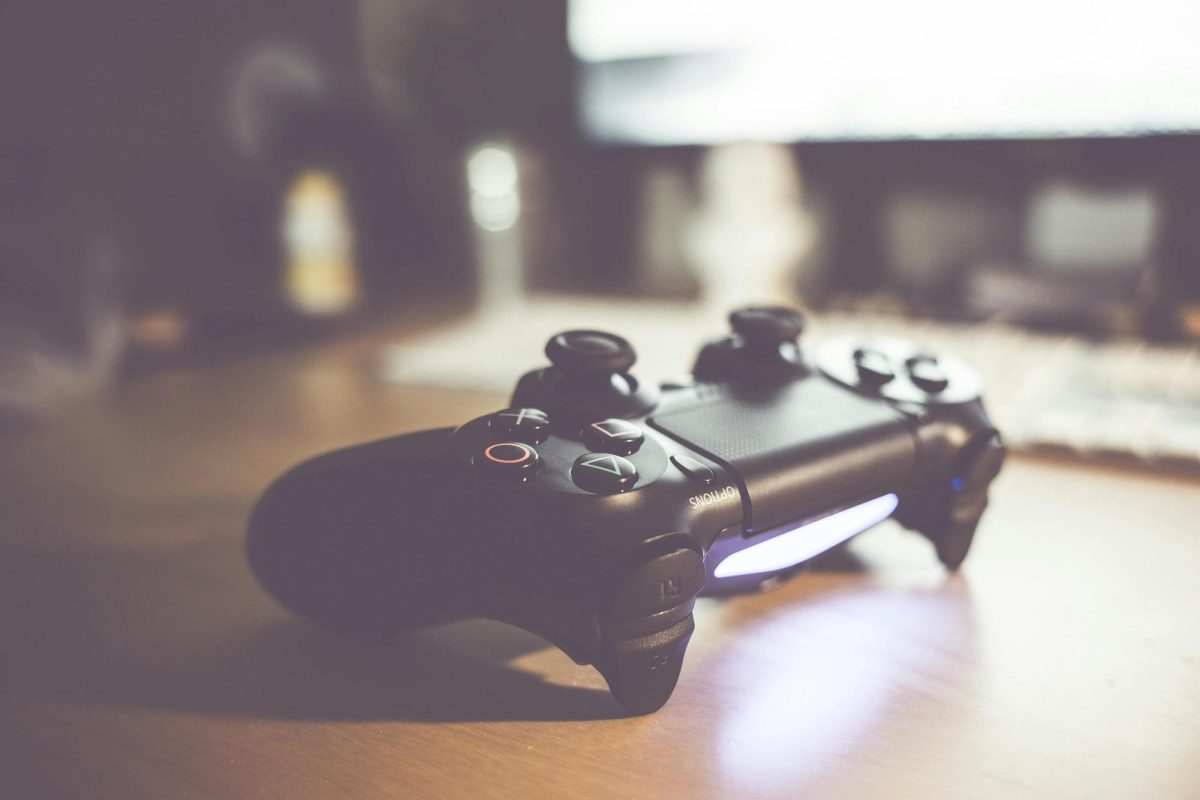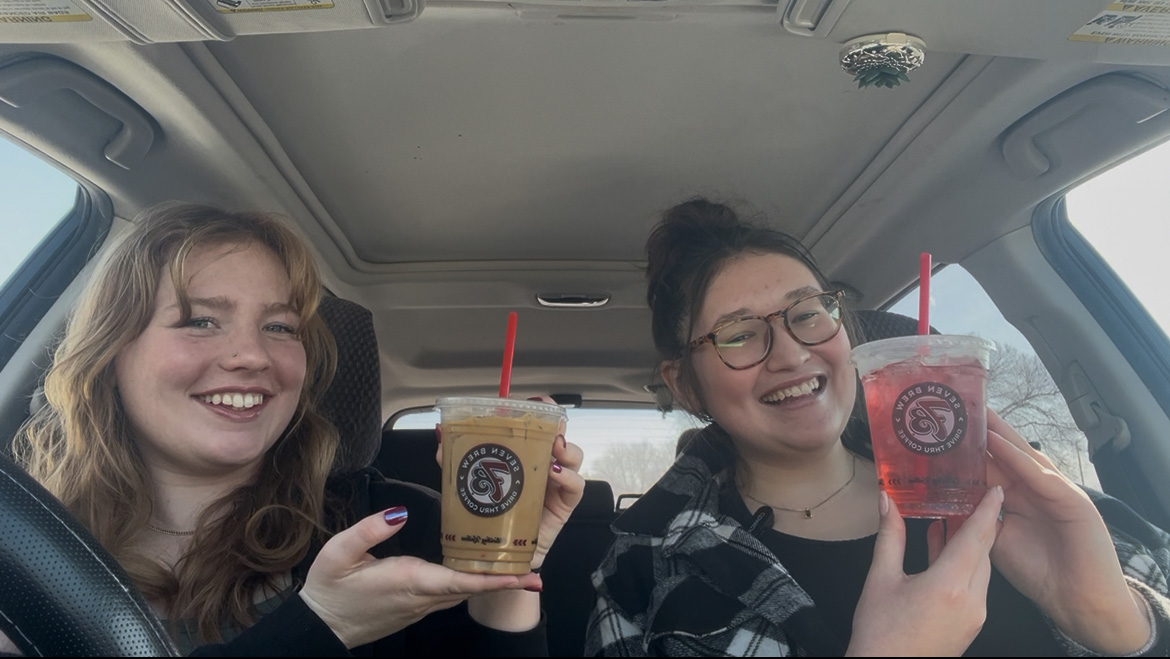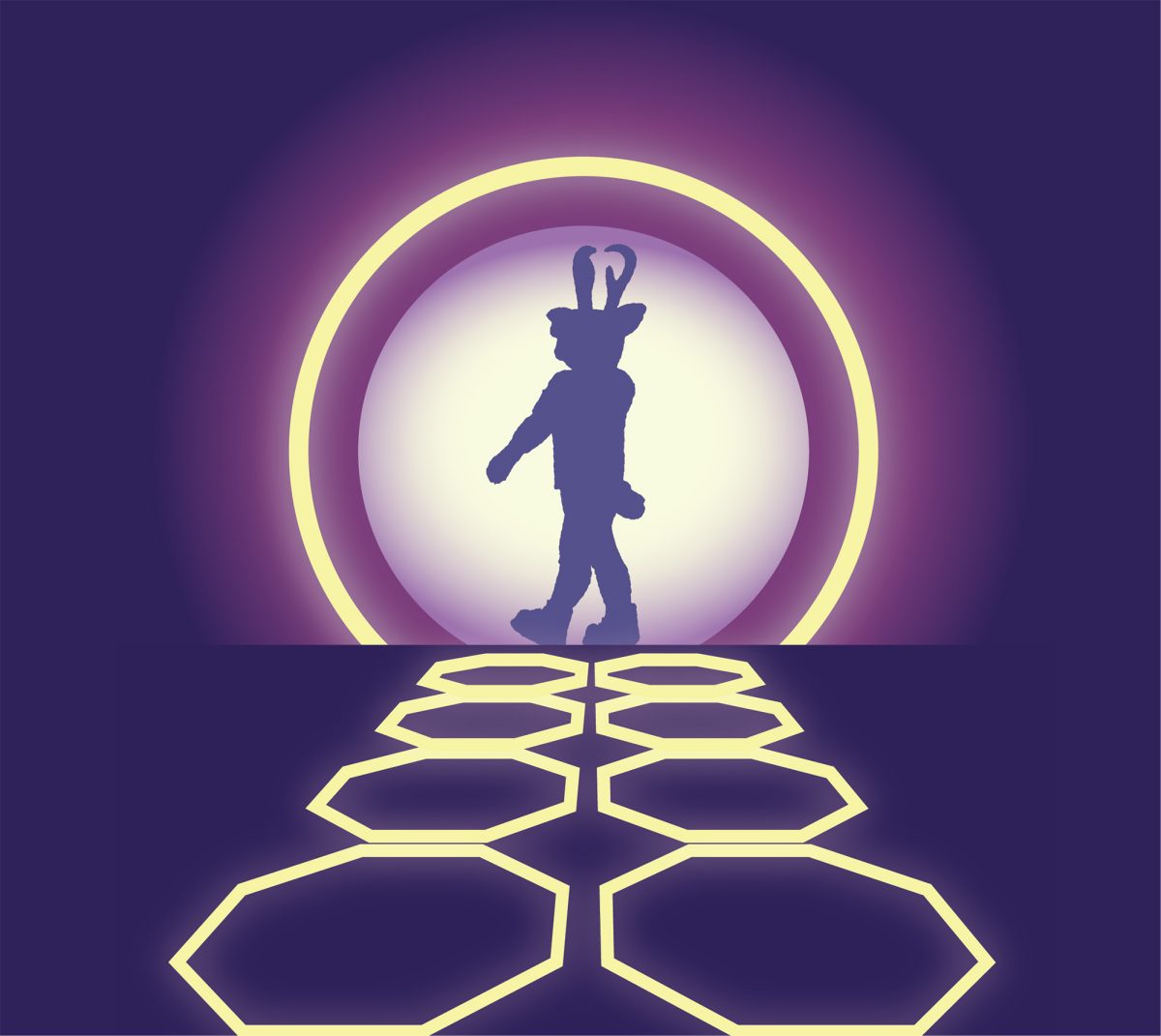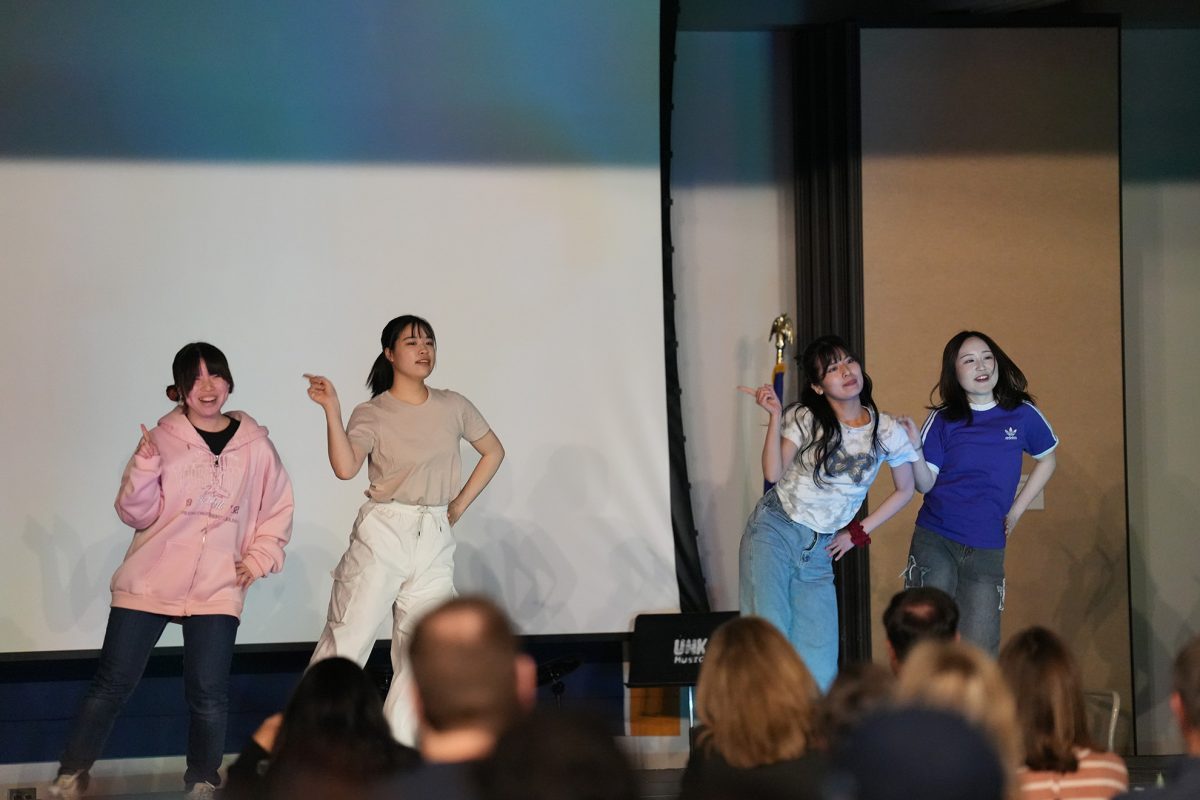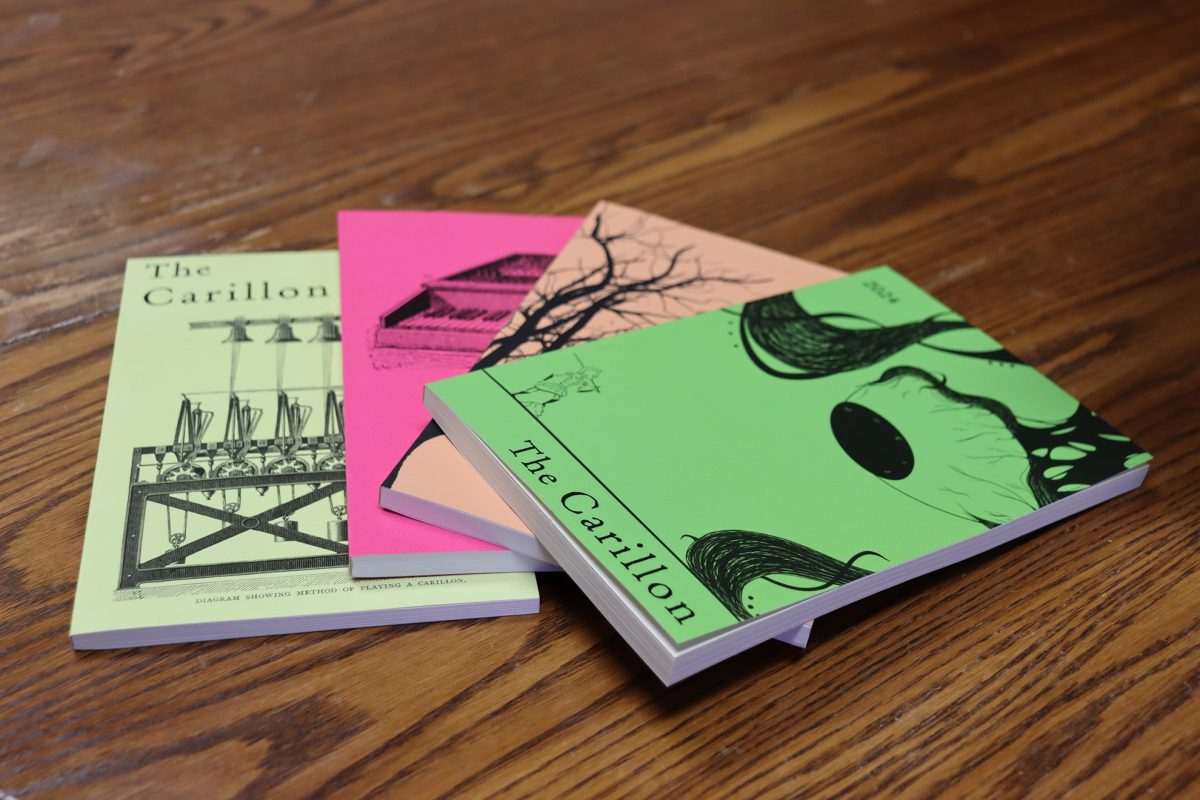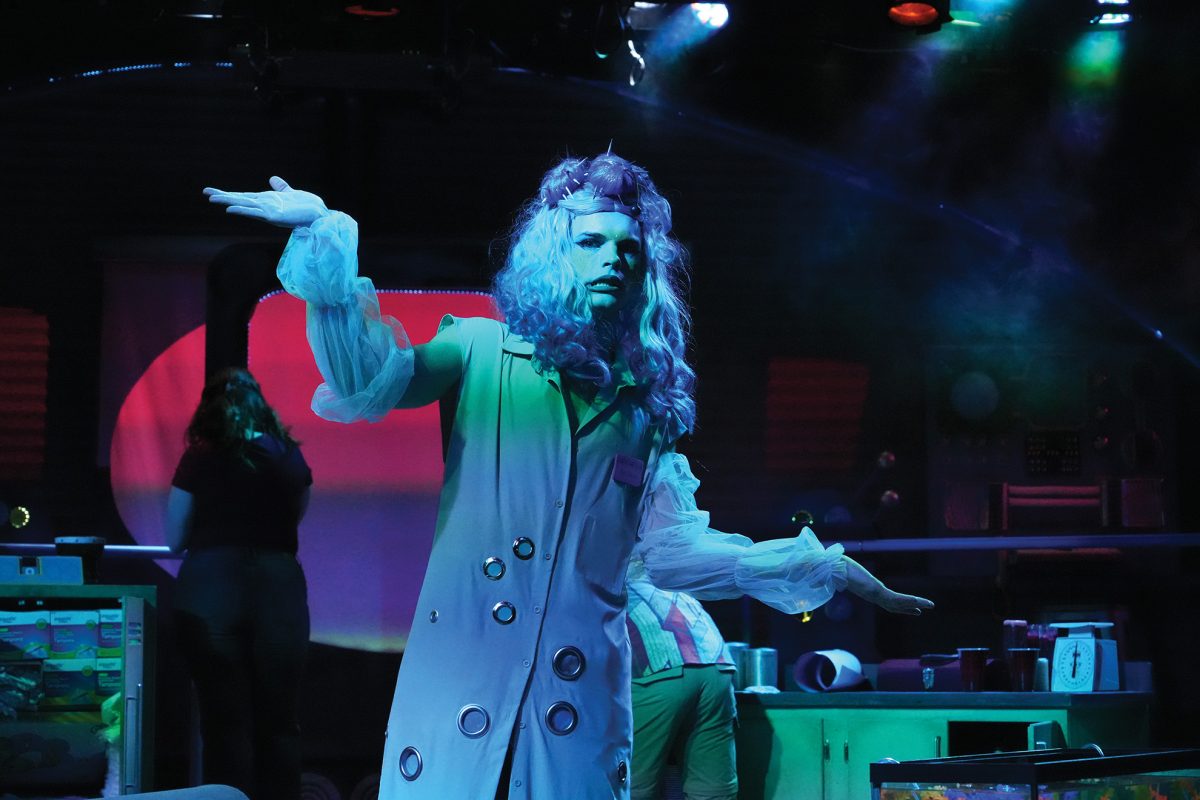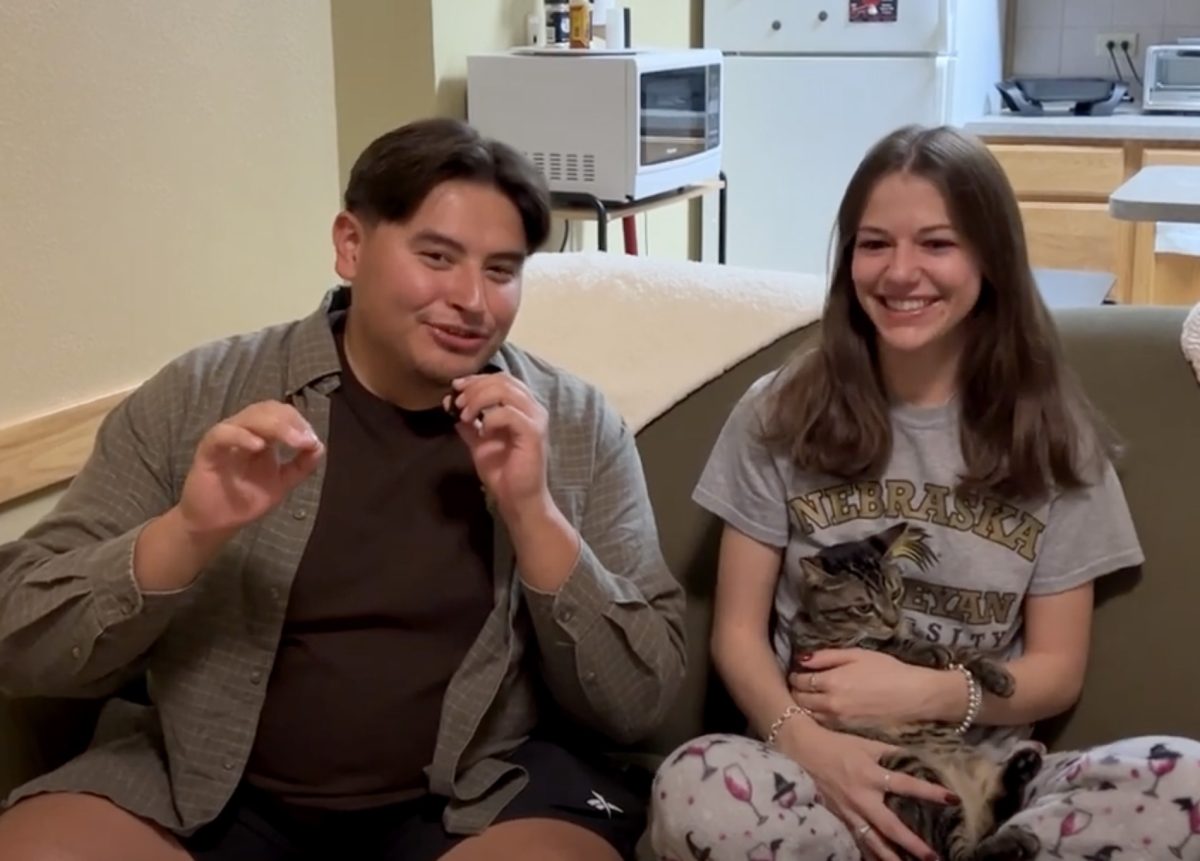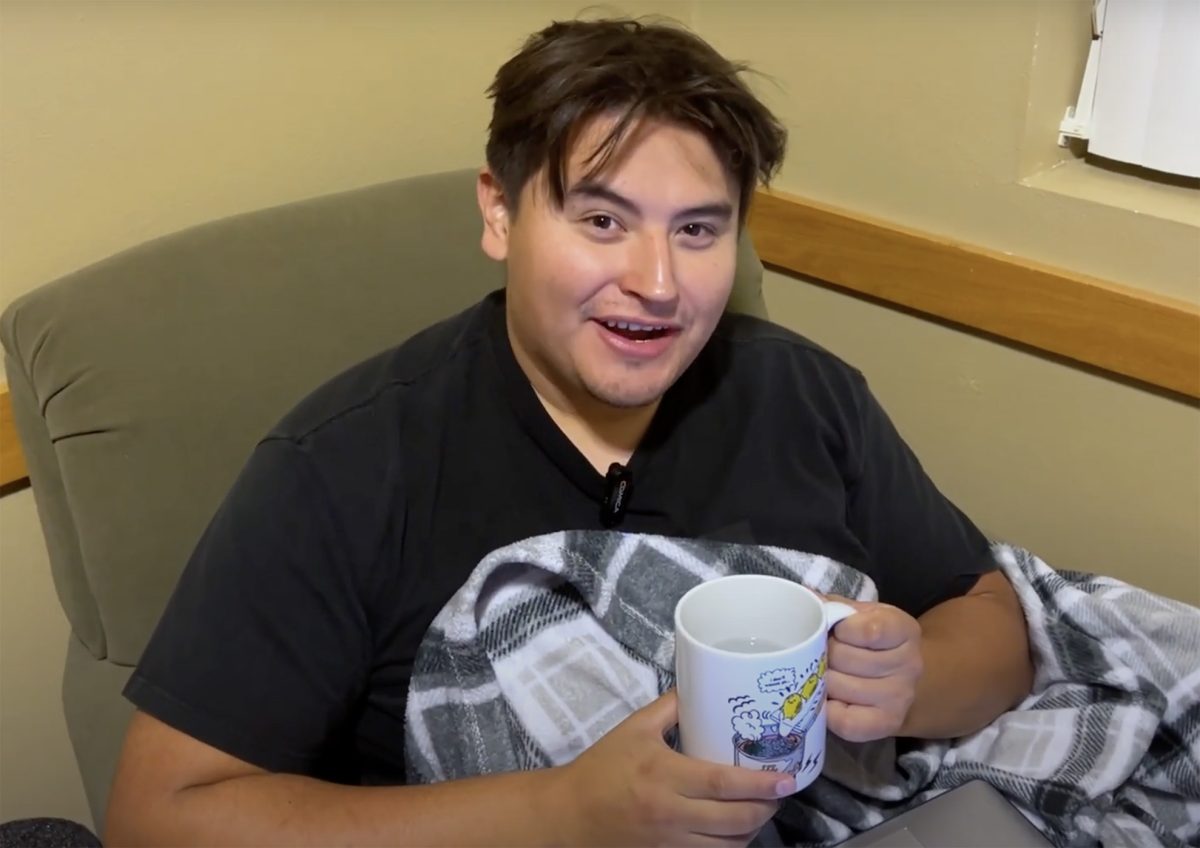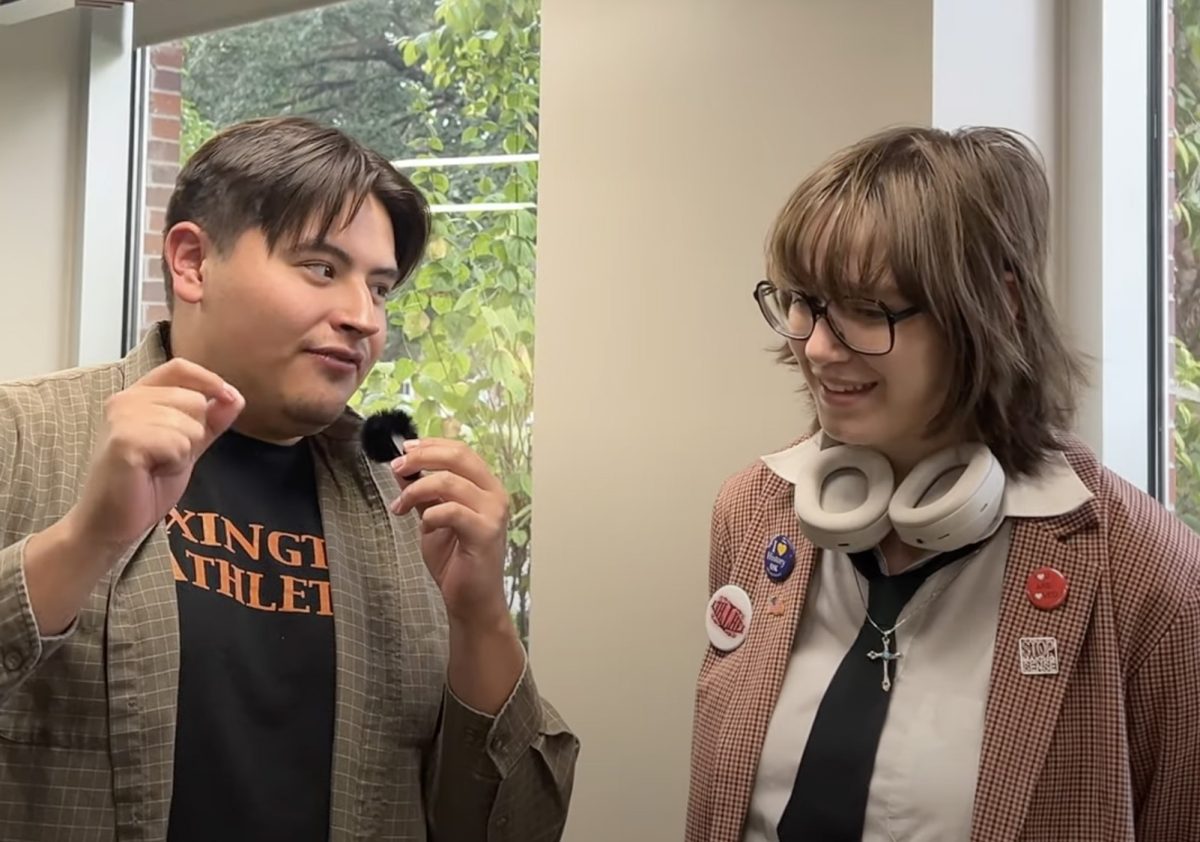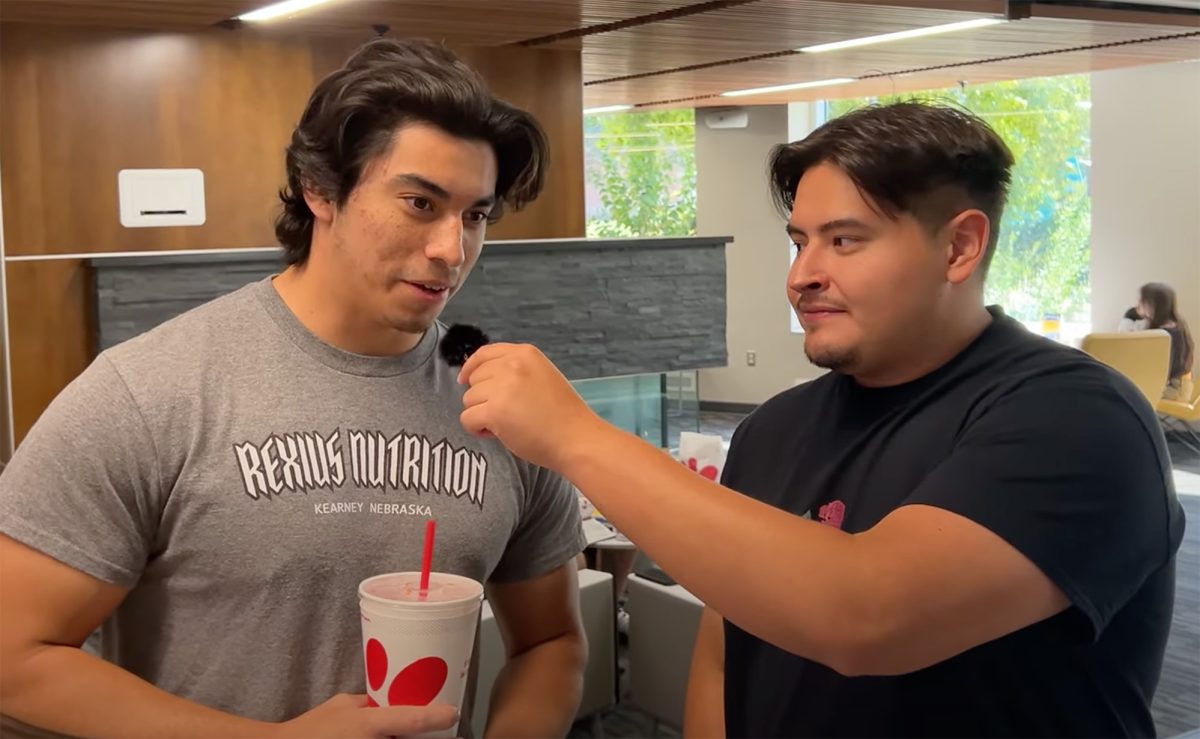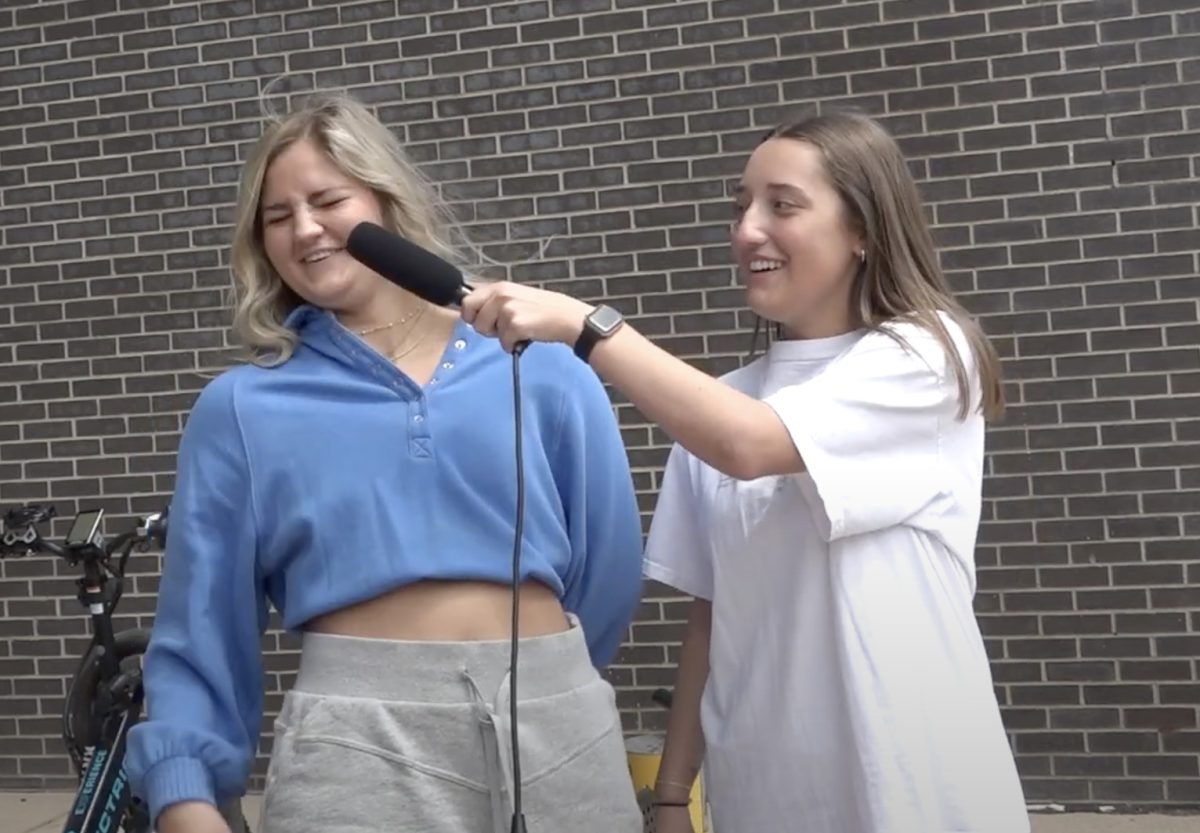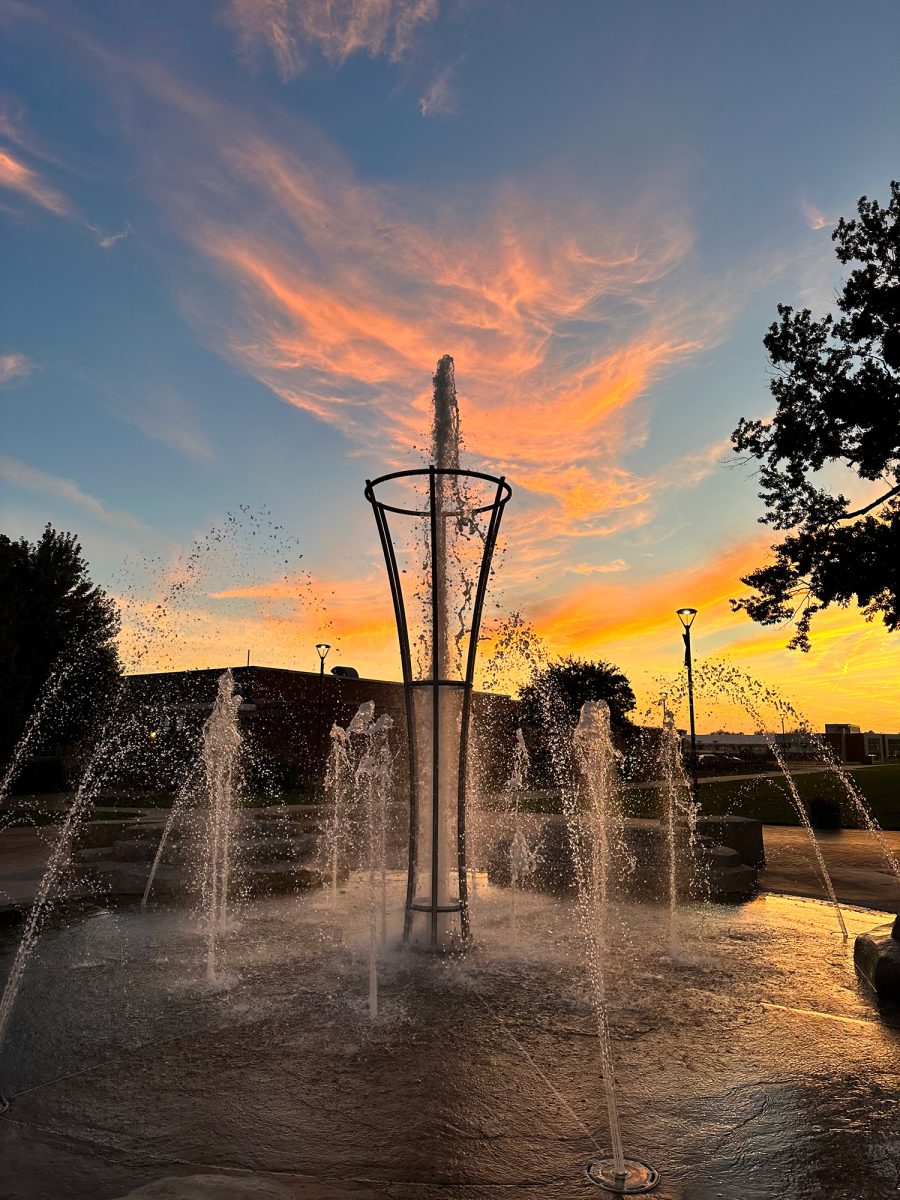
JIYOON KIM / ANTELOPE STAFF Larry Schulte depicts the worlds before and after the pandemic with his woven pieces. 
JIYOON KIM / ANTELOPE STAFF Schulte’s work is in the Walker Art Gallery through Oct. 21.
schwabk2@lopers.unk.edu
Larry Schulte’s woven artwork gives insight into the two different worlds — before COVID-19 and now. His exhibition titled “Two Worlds of Larry Schulte” can be viewed in the Walker Art Gallery in the Fine Arts Building through Oct. 21.
“UNK has a special place in my heart,” Schulte said.
Schulte grew up 15 miles north of Kearney and is a Kearney State College alumni. He graduated with bachelor degrees in mathematics and art, before he got his masters in art at UNK.
Now, Schulte lives in Albuquerque, New Mexico. There, he works in a 500-square-foot studio downtown.
During the COVID-19 pandemic, he adapted to working at home.
“The COVID pages are work that was created at home, during the time when most of the world was locked down,” Schulte said. “During this period of isolation, I needed to work on smaller things, since I was not going out to my studio.”
Unlike the large-scale woven works in his studio, a smaller scale was necessary for his home. He began experimenting with used books, such as “Fritz Kahn,” to cut up and weave together to create pieces of art.
As he worked with these antique pages, Schulte realized he wanted to go in a different direction with the body of work.
“In looking through the book, it occurred to me that rather than cut up the images, I could simply use the pages as a base on which I could add collage and sewing machine stitching,” Schulte said.
This combination of stitching and collaging was utilized for the COVID pages, but the second body of work featured differs from this process.
“The second body of work [woven painted paper] is based on the Fibonacci Sequence – a mathematical sequence I have used in my work since the late 1970s,” Schulte said. “The Fibonacci Sequence (1, 1, 2, 3, 5, 8, 13, 21, . . .) is found throughout the structure of nature. Everything that is spiral in nature follows that sequence.”
To create these intricate pieces of art, Schulte paints two pieces of paper. He then cuts one of the paintings into strips and attaches them to stretcher bars. Then he cuts the second painting into strips as well and weaves the two paintings together. Lastly, Schulte connects the ends of the painting to the stretcher bars to complete the piece of art.
Schulte has practiced this method for more than 40 years.
The content matter of the large scale pieces is much different than the COVID pages.
“The larger paintings are much more about an aesthetic, or visual, experience,” said Matt Ziemke, the Walker Art Gallery director. “They express notions of beauty and structure and are open to individual interpretation.”
The COVID pages highlight a much different message than the typical work that Schulte has produced.
“Though my work has always been about color and pattern it seemed appropriate during COVID to include body images as a statement on the frailty of the human body,” Schulte said.
These two bodies of work stand together in one exhibit, but can mean something different to everyone who views them.
“The work is a bit odd, and for me, it tries to pick apart the mechanics of daily life,” Zeimke said. “But what I see may not be what is there for others. I encourage people to come and see for themselves what might be revealed in the work.”


